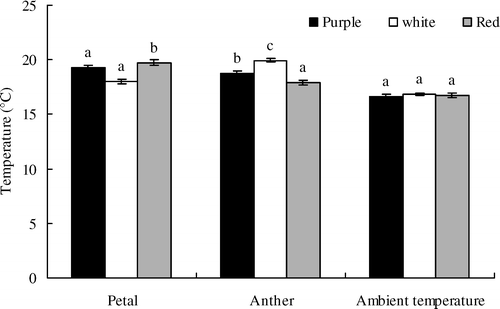Figures & data
FIGURE 1 The variation in flower color frequency during the flowering season (A) and in the chambers with contrasting temperatures (B). T1, T2, and T3 refer to the chamber temperatures of 12 °C/2 °C, 15 °C/2 °C, and 20 °C/2 °C, respectively. Values are given as mean ± 1SE. Significant differences between the blue and white flowers in the same survey are indicated by different capital letters, and significant differences among different surveys for the same flower color are indicated by different lower-case letters (both are at p < 0.05 level). The sample size (N) for each color is 500 in (A) and 150 in (B), respectively.
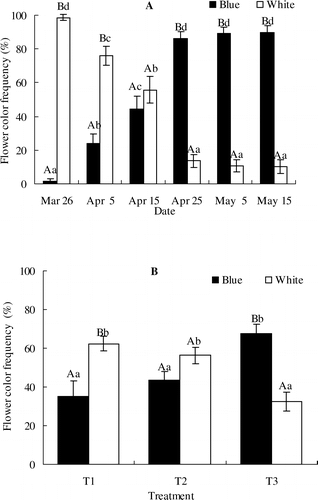
FIGURE 2 The time from closure to being fully open for both blue and white flowers under light (10,000 lux) and darkness conditions (temperature and air humidity are 20 °C and 60%, respectively). Values are given as mean ± 1SE. Significant differences between the blue and white flowers in the same survey are indicated by different capital letters, and significant differences among different surveys for the same flower color are indicated by different lower-case letters (both are at p < 0.05 level). The sample size (N) is 120 for each color in both light and darkness.

FIGURE 3 The temperatures for flower opening (A) and closure (B) on sunny days, windy days, and overcast days. Values are given as mean ± 1SE. Significant differences between the blue and white flowers in the same survey are indicated by different capital letters, and significant differences among different surveys for the same flower color are indicated by different lower-case letters (both are at p < 0.05 level). The sample size (N) is 150 for each color in (A) and (B).
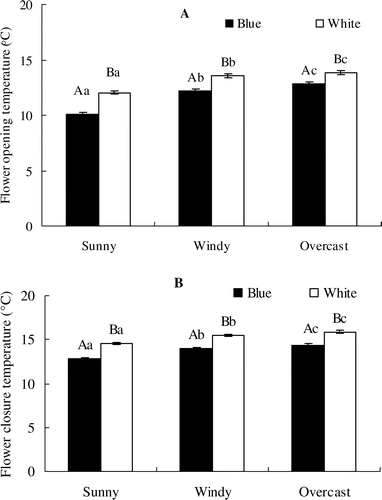
FIGURE 4 The diurnal variations in flower opening percentages and flower closure percentages in three typical weather conditions including sunny days (A), windy days (B), and overcast days (C). The sample size (N) is 150 for each color in (A), (B), and (C).
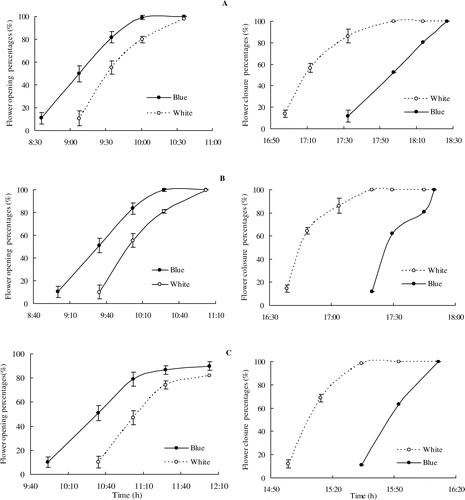
FIGURE 5 Mean petal temperatures (A) of blue and white flowers (B) and anther temperatures during flower opening on sunny and overcast days. Values are given as mean ± 1SE. Significant differences between the blue and white flowers in the same survey are indicated by different capital letters, and significant differences among different surveys for the same flower color are indicated by different lower-case letters (both are at p < 0.05 level). The sample size (N) is 150 for each color in (A) and (B).
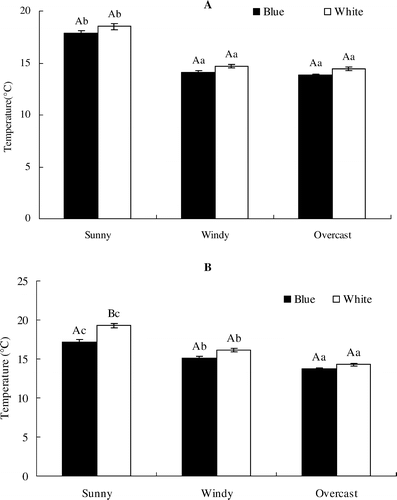
TABLE 1 The regression coefficients of temperature, light, and humidity against flower opening and closure time. **, p < 0.01; ns, not significant.
TABLE 2 The regression coefficients of temperature, light, and humidity against petal and anther temperatures on sunny, windy, and overcast days.*, p < 0.05; **, p < 0.01; ns, not significant.
FIGURE 6 Mean ambient, petal, and anther temperatures of the dyed flowers while flowers are open on sunny days. Values are given as mean ± 1SE. Significant temperature differences among the colors are indicated by different lower-case letters (p < 0.05 level). The sample size (N) is 150 for each color.
